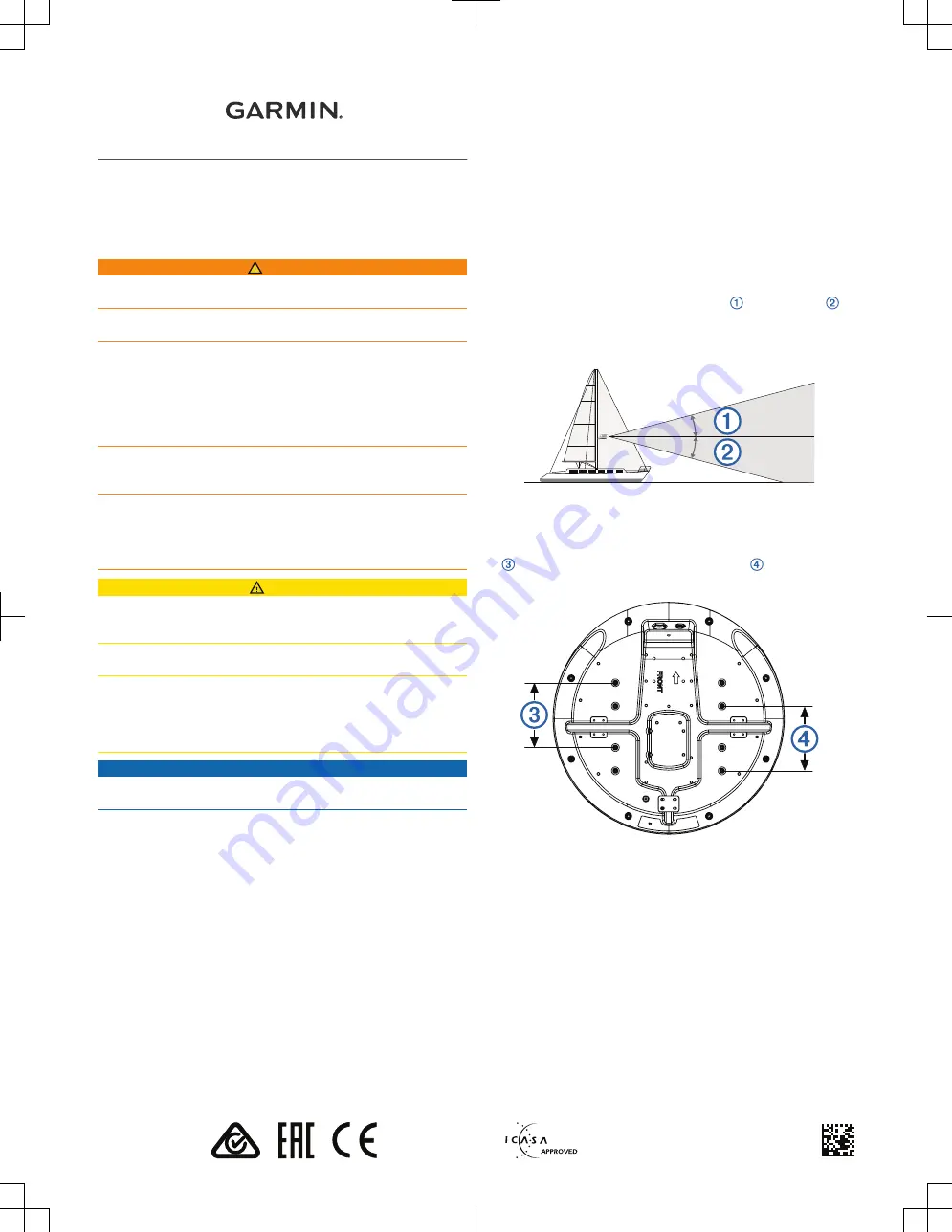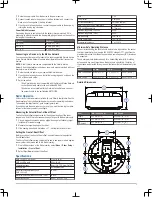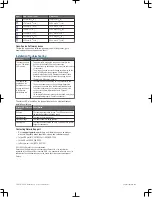
GMR
™
18 XHD/24 XHD/18 HD+
INSTALLATION
INSTRUCTIONS
Important Safety Information
WARNING
Failure to follow these warnings, cautions, and notices could result in personal
injury, damage to the vessel or device, or poor product performance.
See the Important Safety and Product Information guide in the product box for
product warnings and other important information.
The radar transmits electromagnetic energy. To avoid possible personal injury,
damage to the vessel or device, or poor product performance, ensure that the
radar is installed according to the recommendations in these instructions and
that all personnel are clear of the path of the radar beam before transmitting.
When properly installed and operated, the use of this radar conforms to the
requirements of ANSI/IEEE C95.1-1992 Standard for Safety Levels with
Respect to Human Exposure to Radio Frequency Electromagnetic Fields.
To avoid possible personal injury, do not look directly at the antenna at close
range when the radar is transmitting. Eyes are the most sensitive part of the
body to electromagnetic energy.
When connecting the power cable, do not remove the in-line fuse holder. To
prevent the possibility of injury or product damage caused by fire or
overheating, the appropriate fuse must be in place as indicated in the product
specifications. In addition, connecting the power cable without the appropriate
fuse in place voids the product warranty.
CAUTION
This device should be used only as a navigational aid. Using the device for
any purpose requiring precise measurement or direction, distance, location, or
topography may result in personal injury or damage to the vessel.
To avoid possible personal injury, always wear safety goggles, ear protection,
and a dust mask when drilling, cutting, or sanding.
Opening the device may result in personal injury and/or damage to the device.
This device contains no user-serviceable parts, and should be opened only by
a Garmin
®
authorized service technician. Any damage resulting from opening
the unit by anyone other than a Garmin authorized service technician will not
be covered by the Garmin warranty.
NOTICE
When drilling or cutting, always check what is on the opposite side of the
surface to avoid damaging the vessel.
Software Update
You may need to update the device and chartplotter software when you install
this device. See your Garmin chartplotter owner's manual for the full software-
update instructions.
Tools Needed
• Drill
• 9.5 mm (
3
/
8
in.) drill bit
• 32 mm (1
1
/
4
in.) drill bit (optional)
• 4 mm (
13
/
32
in.) hex wrench
• 13 mm (
1
/
2
in.) wrench and torque wrench
• Marine sealant
Mounting Considerations
To complete the installation, you need the appropriate fasteners, tools, and
mounts. These items are available at most marine dealers.
• It is highly recommended that the device is mounted out of range of
personnel, with the horizontal beam width above head height. To avoid
exposure to harmful radio frequency (RF) levels, the device should not be
mounted closer to people than the maximum safe distance value listed in
the product specifications.
• The device should be mounted high above the ship’s keel line with minimal
blockage between the vessel and the radar beam. Obstructions may cause
blind and shadow sectors, or generate false echoes. The higher the
installation position, the farther the radome can detect targets.
• The device should be mounted on a flat surface or a platform that is
parallel to the vessel's water line and is sturdy enough to support the
device's weight. The weight for each model is listed in the product
specifications.
• Most radar beams spread vertically 12.5° above and 12.5° below
the radome's radiating element. On vessels with higher bow angles at
cruise speed, the installation angle can be lowered to point the beam
slightly downward to the waterline while at rest. Use shims if necessary.
• The radome has two mounting options when installed on a standard
marine mount. One mounting option is closer to the center of the radome
, and the second option is offset towards the back to move the radar
further away from the mast.
• The device should be mounted away from heat sources such as smoke
stacks and lights.
• The device should be mounted at a different level than horizontal
spreaders and mast crosstrees.
• To avoid interference with a magnetic compass, the device should not be
mounted closer to a compass than the compass-safe distance value listed
in the product specifications.
• Other electronics and cables should be mounted more than 2 m (6 ½ ft.)
from the radar beam path.
• GPS antennas should be either above or below the radar beam path.
• The device should be mounted at least 1 m (40 in.) from any transmitting
equipment.
TA-2013/1848
2302
Printed in Taiwan
May 2020
190-02105-90_0B






















